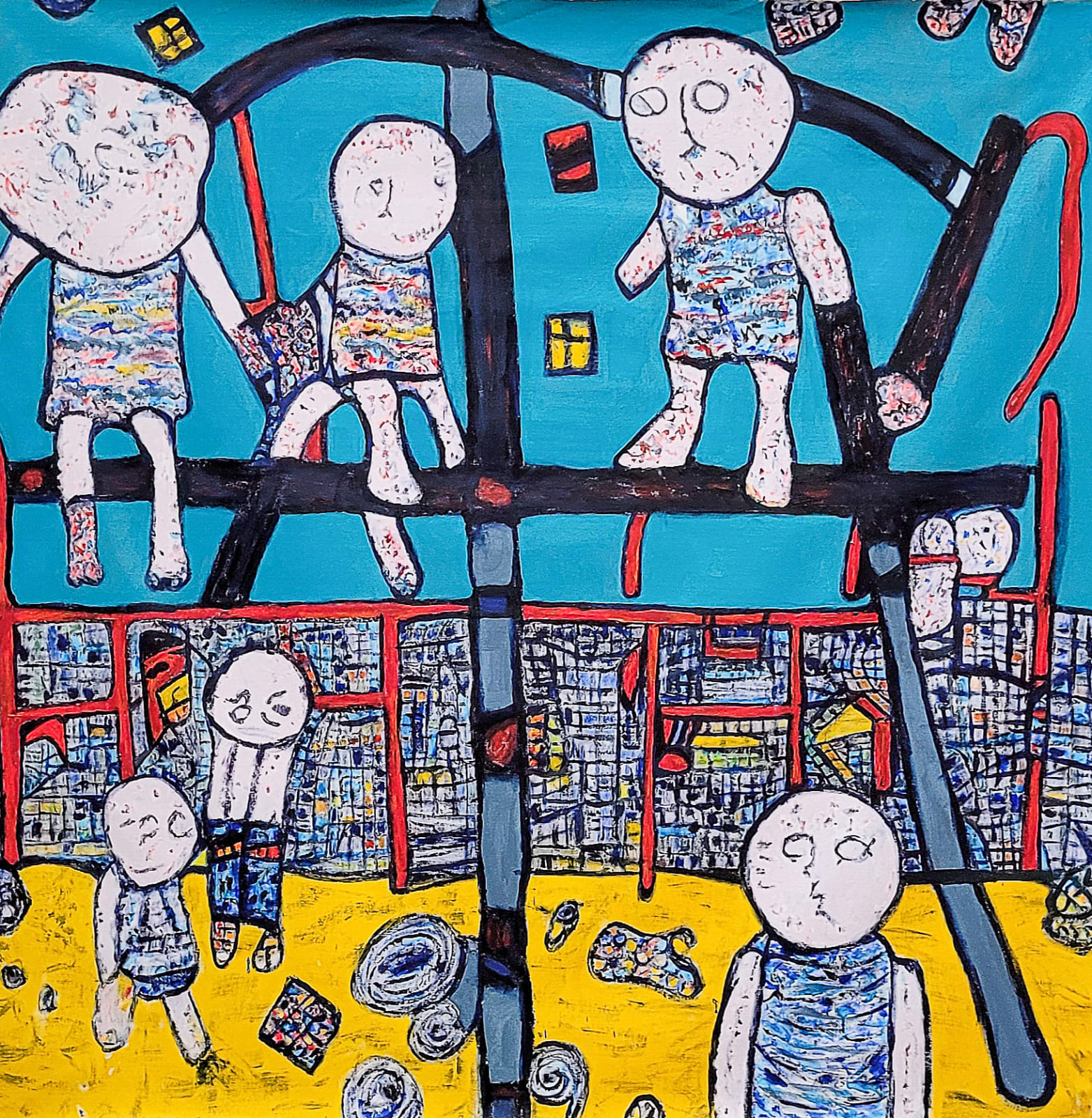Johan Wahlstrom Swedish, b. 1959
I pray for peace where the kids can play in harmony and not in a war zone.
Returning to his roots in his latest body of work, Wahlstrom is mining the history of modern art to conjure up images that pay homage to the artists who first made an impact on him. Recalling the Russian and German expressionists, like Der Blaue Reiter (The Blue Rider) painters Wassily Kandinsky and Franz Marc, who made their mark in the early part of 20thCentury, and CoBrA painters, like Karel Appel, Corneille and Asger Jorn, who were leaders of a short-lived Post-war art movement that continues to have an influence on artists, even in our current times.
Not forgetting his consequential social concerns, Wahlstrom has found ways to insert existing issues into his colorful new canvases. Beginning by drawing a social scene that he envisions directly on unstretched canvas with a marker or a brush, he then finalizes his expressive figures with a lively palette of high-quality acrylic, or his own pigment mixed with
urethane paints. Working in a stream of consciousness manner—similar to how Keith Haring would spontaneously render an eye-catching work on a public wall or a vinyl tarp—Wahlstrom swiftly brings his visions to life. Two of the initial paintings in his aptly titled What You See Is What You Get series reference the Russian invasion of Ukraine through the use of the blue and yellow colors of the Ukrainian flag, which are also the colors of the Swedish flag. His expressive Runners painting shows a group of cattle-like characters frantically fleeing a collapsing city while grasping babies and belonging as. their limbs separate. Likewise, Let the Children Play captures primitively drawn and painted toddlers—rendered like Jean Dubuffet might see them—clinging to the monkey bars or numbly observing their scattered toys in the middle of a war zone.
A pair of paintings titled This Is You and This Is Us impulsively present groups of women in senseless cat fights, like the street squabbles that get posted to social media sites as indiscriminate entertainment for the masses. Envisioned as surreal scenarios and rendered as allover compositions, in which bodies mash into one another to construct fluid
forms, the. canvases employ abstraction to brutal ends. Two other canvases, meanwhile, pay homage to a Swedish national treasure—filmmaker Ingmar Bergman—whose movies and miniseries haveg been described as "profoundly personal meditations into the myriad struggles facing the psyche and the soul."
Couple in Bed represents the disintegration of a bored husband and wife’s marriage, similar to Bergman’s television production Scenes from a Marriage. And, relatedly, Playing Chess With Death mimics a famous scene from Bergman’s film The Seventh Seal, where a medieval knight plays the mindful game with the personification of death, who has come to
take his life. Revisiting the past while looking at the present, Wahlstrom gives us what we want while
revealing who we are. Painting the moments that we are currently inhabiting he offers a comical yet painterly mirror to reflect the absurd world around him in a symbolic style that we can quickly comprehend.
written by Paul Laster, New York, August 2023
